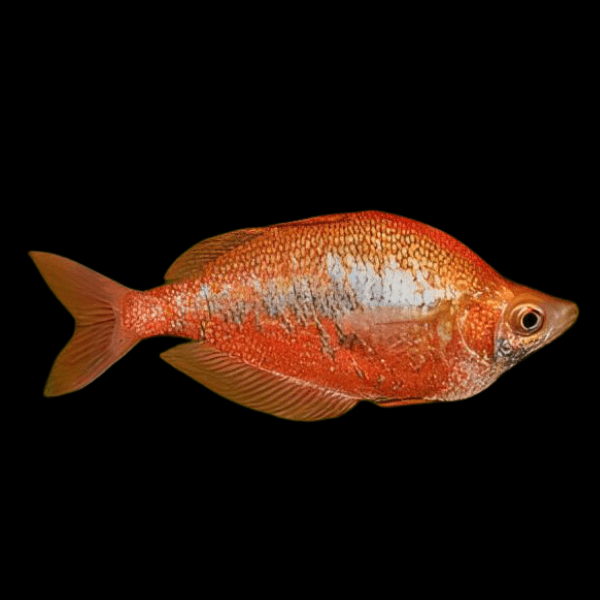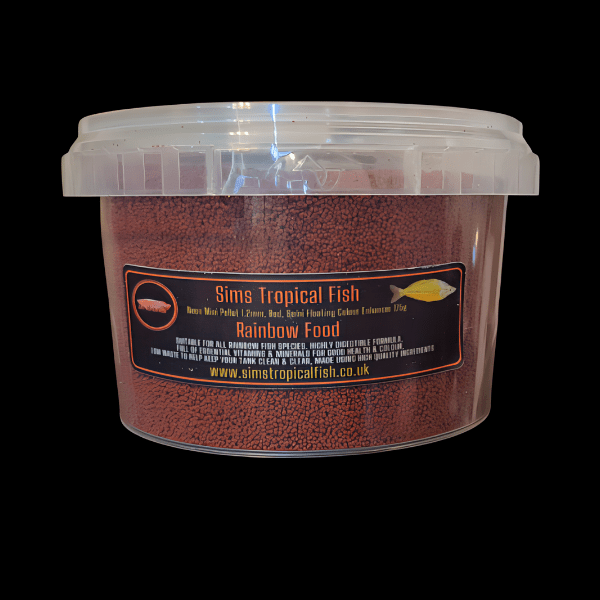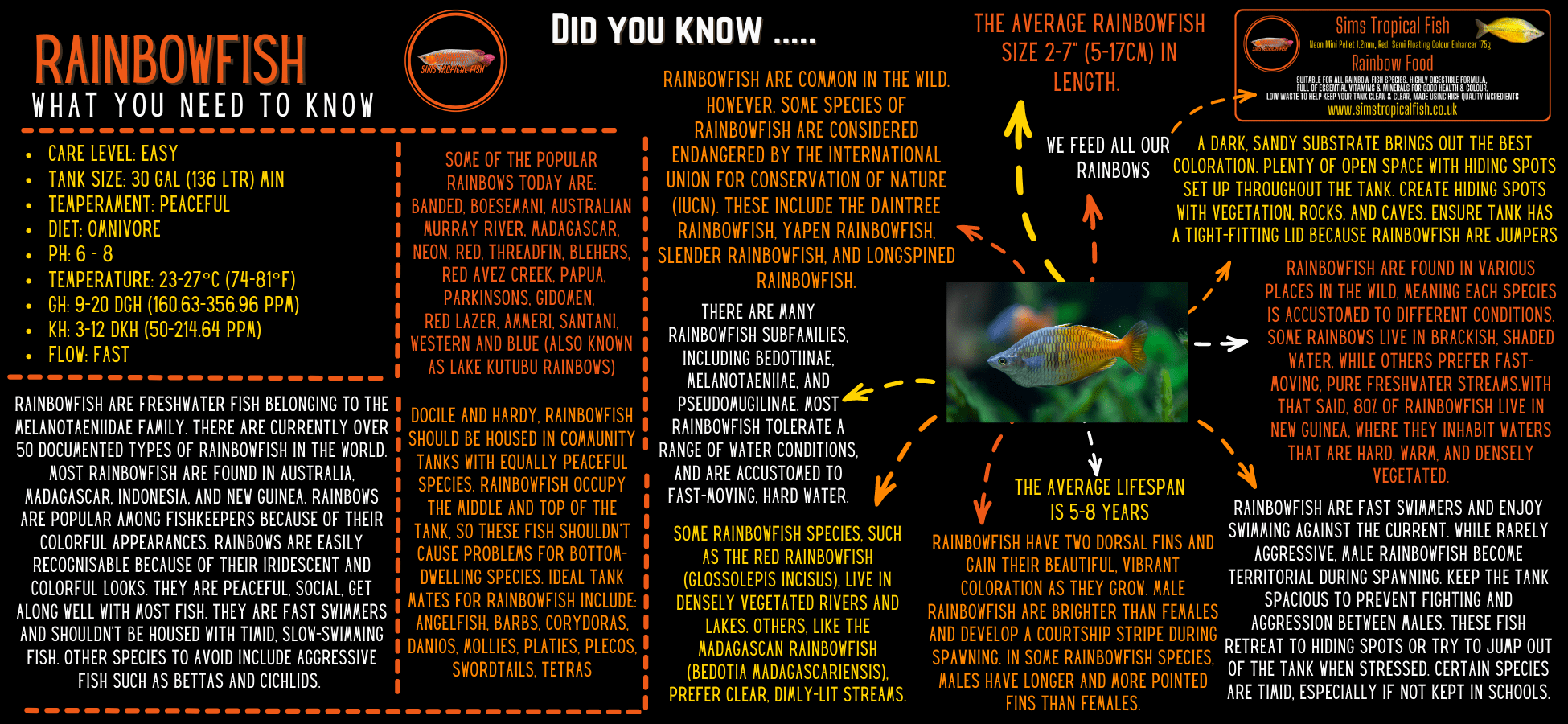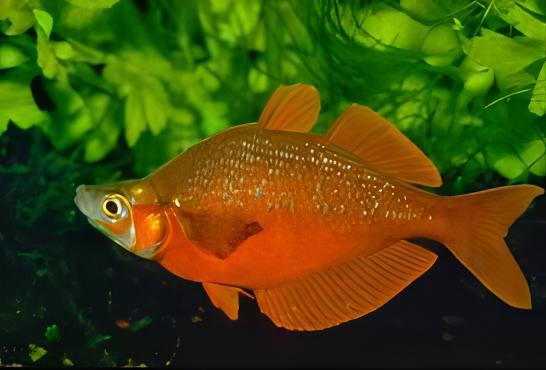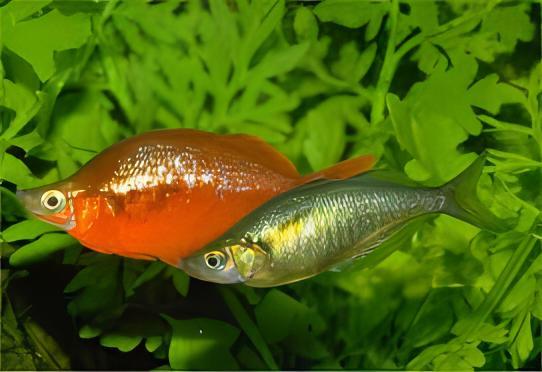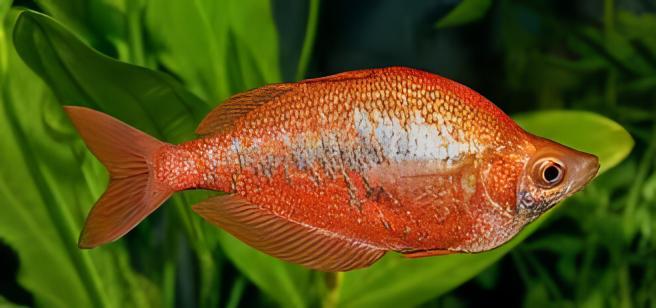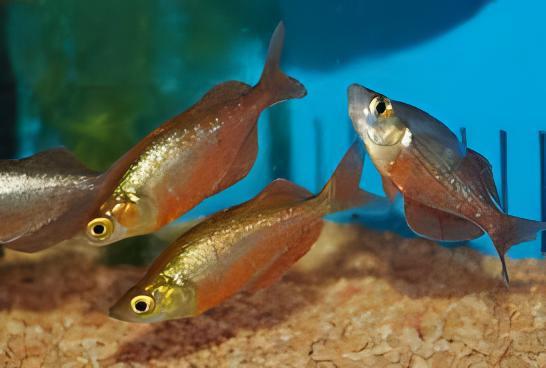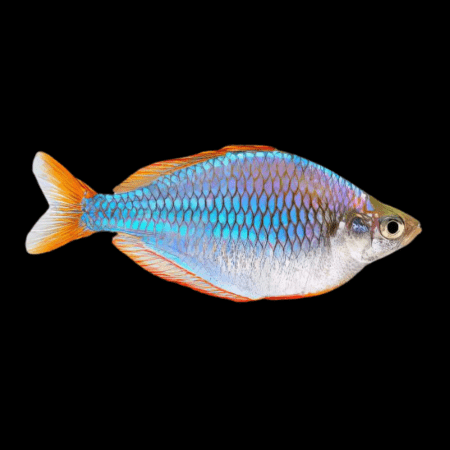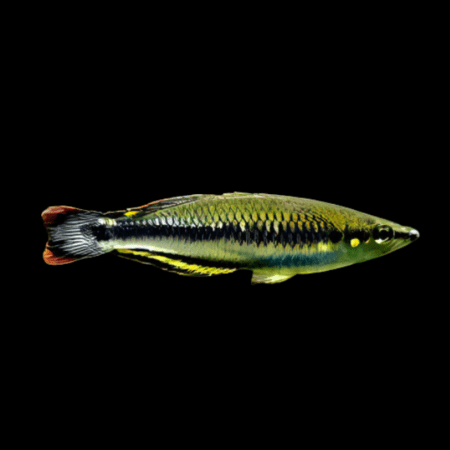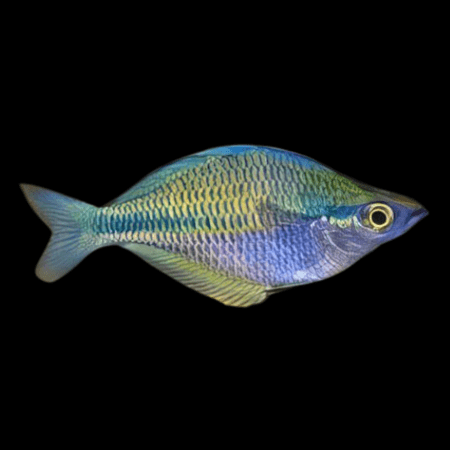Description
Red Rainbow Fish Glossolepis Incisus
Synonyms: Glossolepis incisus
Distribution: Known from Lake Sentani, about 12 km southwest of Jayapura, Irian Jaya, Indonesia.
Maximum Size: 15cm (5.9″)
Temperature: 22-28°C
Water Parameters: Will acclimatise to a wide range of conditions. pH: 6.0-7.5, dH: up to 18 degrees.
Compatibility: Community
Lighting: No special requirements
Sexual Dimorphism: Mature males extremely colourful and deep-bodied. Females silvery and slightly smaller.
Feeding: Flake, granules and frozen foods
Description
Care
Like many of their kind, Red Rainbowfish are native to a single lake in the wild. Lake Sentani in Northern Papua is around 17 miles long and 12 miles wide, with rainbows favouring the shoreline shallows, especially as youngsters. This species shows a clear preference for habitats rich in aquatic plants and overhanging vegetation, with peak activity in the cooler parts of the day. Males are more likely to be found in the shallows, with females spending more time in deeper water.
This is a peaceful shoaling species ideally suited to the planted community aquarium. They should be kept in groups of 6 or more individuals and because of their active nature and large adult size, the aquarium should be at least 4ft long to allow them a good amount of swimming space. As with many other Rainbowfish species, the small juveniles can look comparatively drab to the absolutely stunning adult fish, and so are all too often overlooked in the shops. However, once settled into the security of the planted aquarium, these young specimens will soon begin to colour up, revealing their true adult beauty. The males in particular will develop a positively dazzling appearance, with the dominant male displaying the brightest colours of all. Intensity of males can vary, with higher temperatures often leading to a deeper burgundy hue.
Despite their large and deep-bodied adult size, Red Rainbowfish will not bother smaller tankmates as their mouths/throats are too narrow to be able to swallow them. Although currently abundant in their wild habitat, this species is listed as ‘vulnerable’ on the IUCN redlist of endangered species due to its limited distribution. Red Rainbowfish are one of the most popular aquarium rainbowfishes and are commercially bred on a large scale, so the specimens you see in the shops will be tank-raised and many generations away from their wild ancestors. It’s hard to improve on the wild type but thanks to extensive breeding, an albino form is occasionally available.
Feeding
Flake, green flake, micropellets, and small frozen foods such as mosquito larvae and daphnia.
Breeding
A separate good-sized breeding aquarium should be set up with 75% mature tank water and 25% of dechlorinated fresh water, along with a substrate of marbles. A small air-driven sponge filter (with a mature sponge) should be added to give gentle circulation and filtration. The temperature should be set at 27 °C. A conditioned pair should then be acclimatised across to the breeding aquarium, which should be furnished with plenty of fine-leaved plants/Java moss clumps. After a time, the male will begin displaying to the female. He will then begin to drive the female over the plants, utilising the whole length of the tank. The eggs will be scattered over the plants a few at a time. These fish are known as ‘continual spawners’ which means that the spawning activity takes place over several days, even months in some cases. This can present problems to the aquarist in that some adult fish may begin to consume the eggs as they are scattered. Alternatively, a spawning mop or clump of moss can be added to the main tank and moved to a rearing set up – note that this approach is inadvisable when housing different species together due to the very real danger of hybridisation. Many fishkeepers have found the eggs to be remarkably tough and have had great success in siphoning them out into another aquarium (containing matching water from the spawning tank). The eggs will usually hatch in 6-9 days (dependent on temperature) and once free-swimming, the tiny fry can be offered infusoria, moving onto larger foodstuffs such as baby brineshrimp and fine crushed flake foods as they develop.
